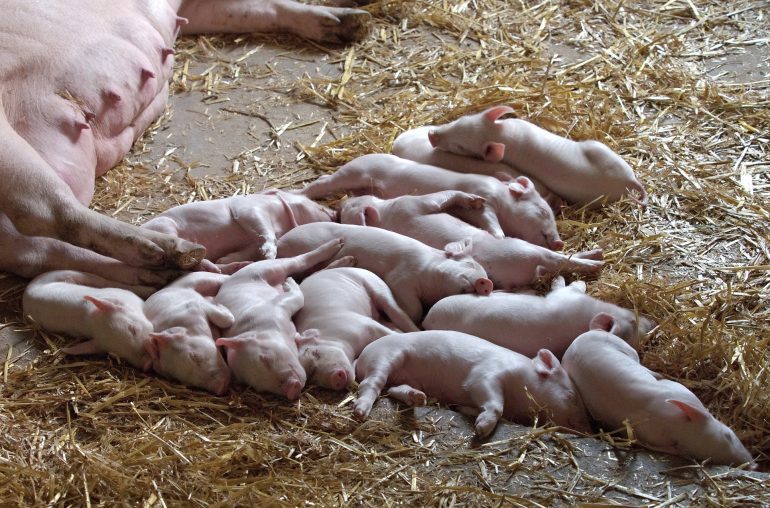- Kent Gray, head of premium genetics at Smithfield Foods, emphasizes the crucial role of data in refining hog genetics.
- Integration of AI and machine learning streamlines data analysis, aiding in the selection of superior breeding stock.
- Smithfield explores AI applications in ultrasound image analysis, weight estimation, and testicular ultrasound to optimize hog quality.
- Collaboration with Virginia Tech focuses on enhancing reproductive potential assessment and overcoming data collection challenges.
- AI implementation in packing plants improves tracking and selection processes, enhancing efficiency and accuracy.
Main AI News:
As the head of premium genetics at Smithfield Foods, Kent Gray shoulders the responsibility of refining the genetic composition of the hogs that Smithfield brings to the market. It’s a multifaceted task that hinges on meticulous data analysis. However, the integration of artificial intelligence (AI) and machine learning stands to streamline this process.
“Genetics pivots on data. It’s imperative that we comprehend and leverage data to pinpoint the superior breeding stock within our livestock,” Gray asserted during an Emerging Research Showcase on generative AI at the North Carolina Biotechnology Center in Research Triangle Park on April 2.
Gray elaborated on the scale of their operation, stating that Smithfield Foods oversees 865,000 sows, translating to 17 million market-bound hogs destined for Smithfield’s packing facilities. He emphasized the arduous nature of gathering sufficient data to optimize the quality of the hogs brought to market, citing the time-intensive and laborious nature of the task.
“The labor aspect poses the most significant challenge presently. Finding individuals willing and adept enough to collect this data is a formidable task,” Gray remarked at the showcase, which was sponsored by North Carolina State University College of Agriculture and Life Sciences.
Examining the Role of AI
Smithfield Foods is actively exploring the potential of AI and machine learning in various facets of its operations, including ultrasound image analysis, body weight estimation, and testicular ultrasound, all with the overarching goal of identifying the most productive breeding stock.
“We initially deployed this technology a few years back when we realized the substantial time investment required for manual ultrasound image analysis. We require insights to select animals before they reach maturity. I aim to ensure we identify the optimal animal, assessing metrics like back fat and loin depth area, without resorting to euthanasia,” Gray explained.
The utilization of AI for ultrasound image analysis involves capturing images of each animal and training the program to discern back fat thickness and loin depth by identifying key anatomical features.
Collaborating with Virginia Tech, Smithfield is exploring how AI and machine learning can facilitate accurate animal weight estimation. “Accurate weight measurement is pivotal. While I doubt we’ll achieve absolute precision for genetic purposes, obtaining animal weight enhances our ability to market them effectively,” Gray stated.
He emphasized the importance of establishing a standard deviation for animal weight at the packing plant to meet specific market demands. Gray envisions AI and machine learning enhancing the selection process, enabling Smithfield to prioritize hogs that offer maximum value.
Advancements in Ultrasound Technology
Smithfield Foods is also collaborating with Virginia Tech to develop machine learning algorithms for ultrasound imaging of hog testicles, aiming to identify boars with superior reproductive potential before breeding occurs on the farm. Gray highlighted the challenge of collecting data in barn environments, where cleanliness and connectivity pose significant obstacles.
Looking Ahead: AI in Packing Plants
Gray envisions AI and machine learning playing a pivotal role in Smithfield’s packing plants, leveraging the wealth of data collected during the harvesting process. He sees potential in utilizing technology to track individual animals throughout the processing stages, thereby optimizing efficiency and accuracy in animal selection.
“As we process these pigs, we’re tasked with removing their identification tags, typically ear tags. It’s imperative that we monitor each animal’s journey through the processing stages. Leveraging technology offers us the opportunity to enhance our tracking capabilities and optimize our selection processes,” Gray concluded.
Conclusion:
The integration of AI and machine learning in livestock management, as demonstrated by Smithfield Foods, represents a significant leap forward in optimizing animal quality and production efficiency. This innovative approach not only streamlines data analysis and selection processes but also offers insights into market demand, ultimately enhancing competitiveness and profitability in the industry.

